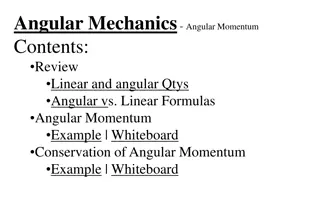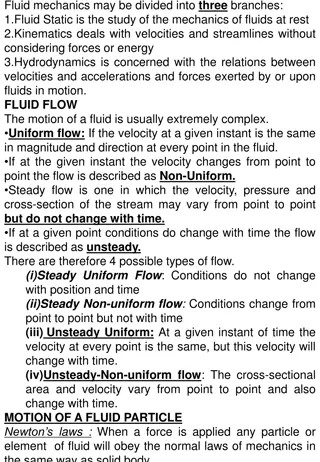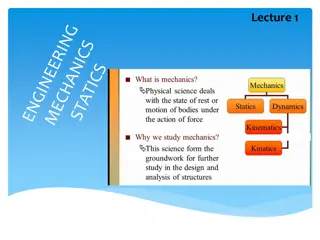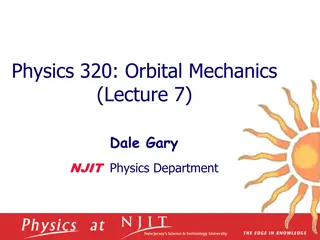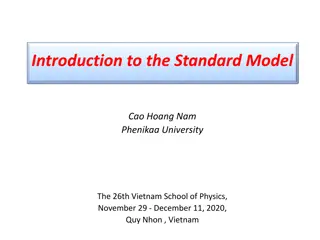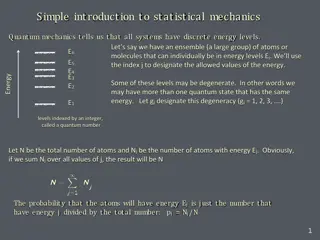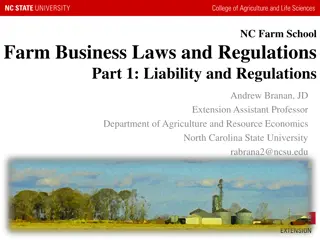Measurement Concepts in Agriculture Mechanics
Principles of area and volume measurement in agriculture mechanics. Learn how to calculate the areas of squares, circles, and triangles, as well as the volumes of rectangular solids, triangular prisms, and cylinders. Discover the significance of linear, square, and cubic measures in agricultural applications.
Download Presentation

Please find below an Image/Link to download the presentation.
The content on the website is provided AS IS for your information and personal use only. It may not be sold, licensed, or shared on other websites without obtaining consent from the author.If you encounter any issues during the download, it is possible that the publisher has removed the file from their server.
You are allowed to download the files provided on this website for personal or commercial use, subject to the condition that they are used lawfully. All files are the property of their respective owners.
The content on the website is provided AS IS for your information and personal use only. It may not be sold, licensed, or shared on other websites without obtaining consent from the author.
E N D
Presentation Transcript
Square measure is a system for measuring area. The area of an object is the amount of surface contained within defined limits. The area of a square or rectangle is equal to the length times the width or; A = l x w For example the square below is four square inches. 1 in A = l x w A = 2 x 2 A = 4 in 2 2
The area of a circle is equal to pi times the radius squared. A = x r For example, a circular grain silo has a round floor 18 feet in diameter. What is the area of the circle? d = 18 r = 9 = 3.14 A = x r A = 3.14 x (9 x 9) A = 254.34 ft. 18
The area of a triangle is equal to one half the base (b) times the height (h). A = (b x h) Example: What is the area of a triangle with a base of 2 yards and a height of 3 yards. b = 2 h = 3 A = ? A = (b x h) A = (2 x 3) A = 3 yds 3 2
A cubic measure is a system of measurement of volume or capacity of an object expressed in cubic units. Linear measure adds only one dimension to find total distance. Square measure multiplies two dimensions to find area of a surface. Cubic measure multiplies three dimensions (length, width and height) to find the volume of structures. When determining volume of an object, all measurements must be expressed in the same units of measurement.
The volume of a rectangular solid is equal to the length (l) times the width (w) times the height (h). V = l x w x h Example: Determine the volume of the rectangular crate pictured below. V = l x w x h V = 6 x 4 x 4 V = 96 ft 4 4 6
The volume of a triangular prism is equal to the area of the triangle times the length of the prism. V = ( (b x h)) x l The volume of a cylinder is equal to the area of the circular base times the height of the cylinder. V = ( x r ) x h


